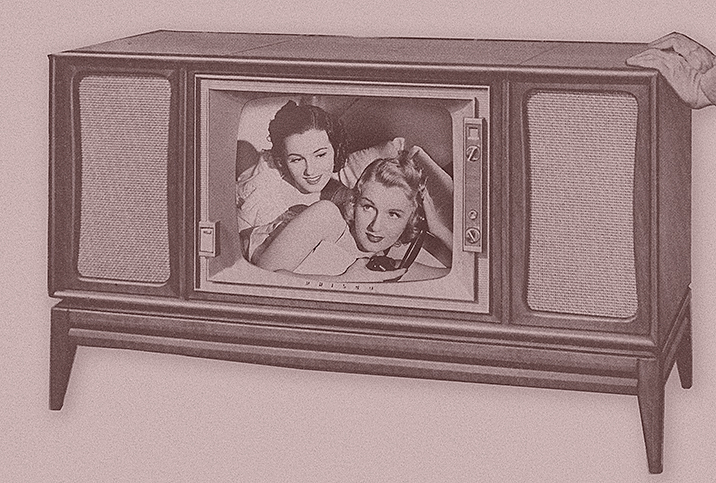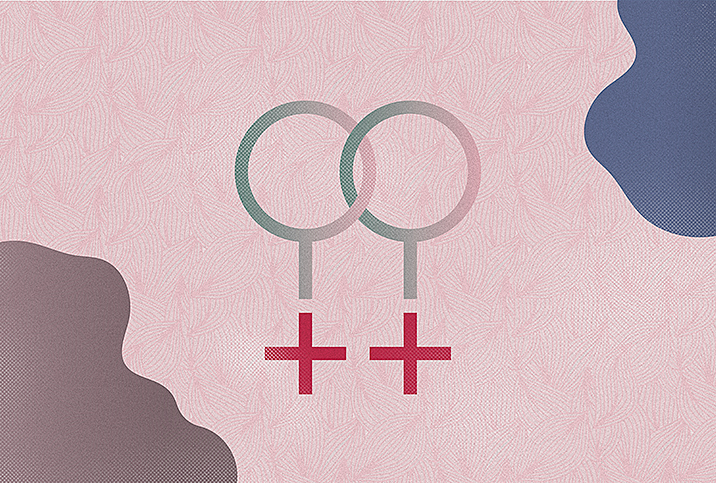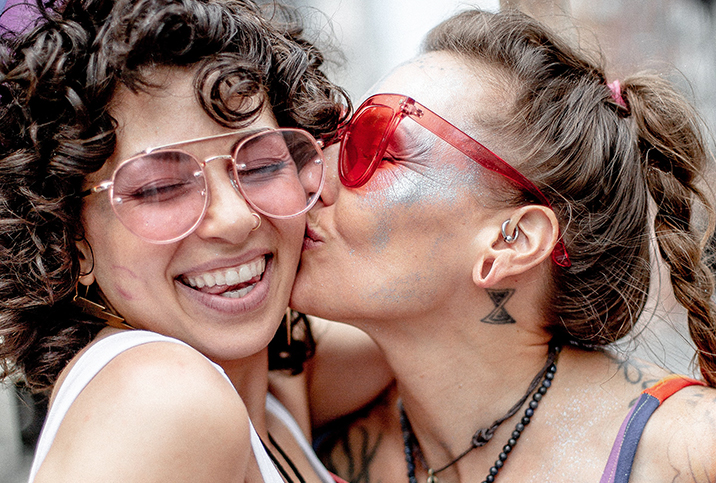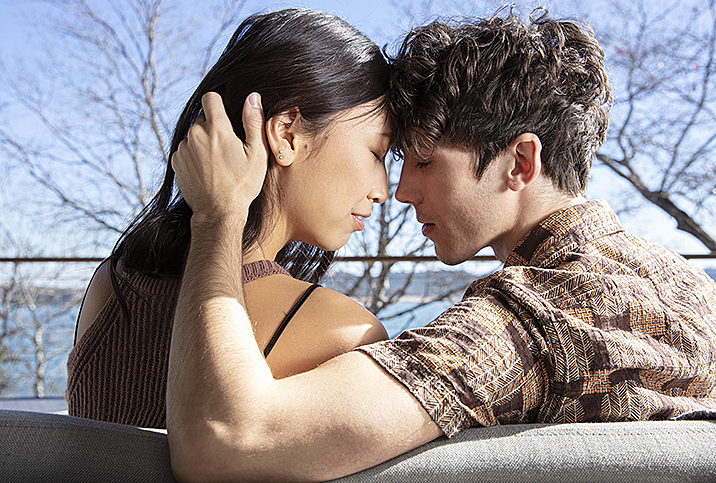Where Did All the Fun Lesbian Movies Go?

Queer cinema has come a long way in 15 years. Ever since "Brokeback Mountain" almost won Best Picture at the 2006 Oscars, movies centering on gay desire have become handsomely made, serious and respectable. Most important, they're taken seriously.
"Moonlight" won 2017's Best Picture in part because it tenderly explores a love between Black men that carries through from adolescence to their adult lives in a rapturous final scene. Timothée Chalamet as a 17-year-old in "Call Me by Your Name" discovers the first pangs of same-sex affection, along with its inevitable disappointment. "Love, Simon" gives a closeted high-schooler his own John Hughes story—and made John Hughes–size bucks at the American box office, to the tune of $66 million.
Lesbian movies, however, have only been a small piece in the recent mainstreaming of gay characters on the big screen. They also tend to feel removed from the pulse of contemporary culture. Period pieces such as "Carol" (2015), "Portrait of a Lady on Fire" (2019) and "Ammonite" (2020) have taken up most of the oxygen. They're sumptuously staged, if notably chaste—blink and you'll miss that sex (might've) happened. (On the other end of the spectrum, 2013's "Blue Is the Warmest Color" is unapologetically sexy and very, very French. Its sex also feels more in service of male rather than female viewers.) Arthouse titles like "Pariah" and "Disobedience" struggle to even get noticed.
These movies aim for a high-minded sensibility. They're quiet and polite. They want accolades, and they get them, even if the Oscars have proven elusive. They're also, after you've seen enough of them, a bit staid and dreary. Winning an award, it turns out, doesn't necessarily make something good or even interesting—and it definitely doesn't make it fun.
The irony of the current moment is that while lesbian relationships proliferate more freely than ever, Hollywood has burrowed even more deeply into a chastened past that looks downright ancient now.
"Saturday Night Live" recently skewered this phenomenon in the sketch "Lesbian Period Drama." Host Carey Mulligan plays the morose wife left with a "female companion" (SNL's Heidi Gardner). The fake trailer markets itself to its audience with the promise of gray skies, long rocky walks, "Academy Award–winning glance choreography," and "the world's saddest flirting." As well-meaning as the movies it mocks sometimes are, it's hard not to find humor in their overall drabness.
It wasn't always this way. Lesbian movies in the '90s, a kind of Golden Age for the genre, were nothing if not fun. (It's no coincidence that the most vital of the latest batch in sapphic cinema, "Carol," is directed by Todd Haynes, a pioneer of '90s New Queer Cinema.) While indie filmmaking was exploding in popularity, and Quentin Tarantino and Steven Soderbergh turned their Sundance hype into genuine commercial success, deeply personal, largely female-helmed movies that confronted the realities and fantasies of lesbians regularly snuck onto the marquee. Freed from the pressures of being mainstream—whatever that means—they were bold instead.
The Wachowskis' sly directorial debut, "Bound" (1996), is a luscious, leather-clad lesbian fling wrapped in a head-spinning neo-noir heist thriller. The future "Matrix" directors, who have since come out as trans women, key into the ways that Jennifer Tilly and Gina Gershon's characters delight in ripping off the men around them to actualize their own dreams. Kevin Smith's "Chasing Amy" (1997) sees Joey Lauren Adams' free-spirited lesbian falling for Ben Affleck —who can blame her?—until she suddenly isn't. The delicious '90s Canadian romantic comedy "Better Than Chocolate" (1999), whose meet-cute between Vancouver artists is soundtracked by Ani DiFranco, doesn't seem to care what straight people think of it. Its overriding message is that whatever hate comes their way (and it will), these characters can find their own corner to be themselves—and roll around naked in paint together.
Somewhat surprisingly, these movies (and others like "But I'm a Cheerleader," "Kissing Jessica Stein" and "Saving Face") were profitable, making millions off tiny budgets. That was no doubt, thanks to the fact they reflected viewers' lives back at them in a way that served as a release. Even when tragedy intervened, as in Lisa Cholodenko's ("The Kids Are All Right") stunning debut "High Art" (1998), the sensuality between women was a beautiful escape. In that movie's best scene, the outside world melts away as Syd (Radha Mitchell) and Lucy (Ally Sheedy) explore each other's bodies.
"What should I do to you?" Syd nervously asks.
Lucy responds with the wisdom of someone who's been here before, and is eager to go back.
"Whatever you want."
The irony of the current moment is that while lesbian relationships proliferate more freely than ever, Hollywood has burrowed even more deeply into a chastened past that looks downright ancient now. The relatable intimacy of those '90s cool-to-be-weird classics has all but disappeared. Maybe that's because it no longer feels critical to depict, or because it doesn't win awards, or because small movies just don't break out like they used to, or for the more obvious reason that women's stories still regularly get sidelined in the industry. Whatever the reason, as lesbian movies get more expensive and serious, their role as pure pleasure vehicles has woefully diminished. Here's hoping the next commercial indie film boom, and the women leading it, changes that.


















